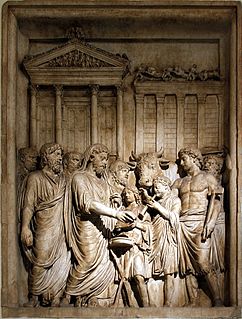 W
WSacrifice is the offering of food, objects or the lives of animals or humans to a higher purpose, in particular divine beings, as an act of propitiation or worship.
 W
WThe Annual Customs of Dahomey were the main yearly celebration in the Kingdom of Dahomey, held at the capital, Abomey. These ceremonies were largely started under King Agaja around 1730 and involved significant collection and distribution of gifts and tribute, religious ceremonies including human sacrifice, military parades, and discussions by dignitaries about the future for the kingdom.
 W
WChemosh was the god of the Moabites. He is most notably attested in the Mesha Stele and the Hebrew Bible. While he is most readily associated with the Moabites, according to Judges 11:23–24 he seems to have been the national deity of the Ammonites as well.
 W
WEsus, Hesus, or Aisus was a Gaulish god known from two monumental statues and a line in Lucan's Bellum civile.
 W
WFeng Shan or feng-shan, also referred to as the Feng and Shan sacrifices, was an official rite offered by the Son of Heaven to pay homage to heaven and earth. The sacrifices were usually offered at Mount Tai, the highest peak in the area, and nearby Mount Liangfu. The emperor would pay homage to heaven and earth in the Feng and Shan sacrifices respectively. Completing Feng Shan allowed the emperor to receive the mandate of heaven. The term feng can roughly be translated to mean "to seal", while the term shang can roughly be translated to mean "to clear away".
 W
WWorship or deification of fire is known from various religions. Fire has been an important part of human culture since the Lower Paleolithic. The earliest known traces of controlled fire were found at the Daughters of Jacob Bridge, Israel, and dated to 790,000 years ago. Religious or animist notions connected to fire are assumed to reach back to such early pre-Homo sapiens times.
 W
WGrave goods, in archaeology and anthropology, are the items buried along with the body.
 W
WHell money is a form of joss paper printed to resemble legal tender bank notes. The notes are not an official form of recognized currency or legal tender since their sole intended purpose is to be offered as burnt offerings to the deceased as a solution to resolve their assumed monetary problems in the afterlife. This custom has been practiced by the modern Chinese and across East Asia since the late 19th century. Early 20th century examples bore resemblance to minor commercial currency of the type issued by businesses across China until the mid-1940s.
 W
WKohala Historical Sites State Monument includes the National Historic Landmark Moʻokini Heiau and the birthplace of Kamehameha I. It is located in remote North Kohala on the Island of Hawaiʻi.
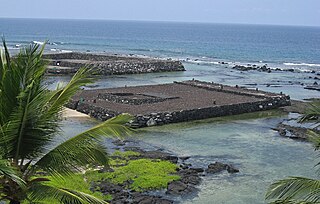 W
WIn ancient Hawaii, a luakini temple, or luakini heiau, was a Native Hawaiian sacred place where human and animal blood sacrifices were offered.
Sacrifice was a religious activity in Maya culture, involving the killing of humans or animals, or bloodletting by members of the community, in rituals superintended by priests. Sacrifice has been a feature of almost all pre-modern societies at some stage of their development and for broadly the same reason: to propitiate or fulfill a perceived obligation towards the gods.
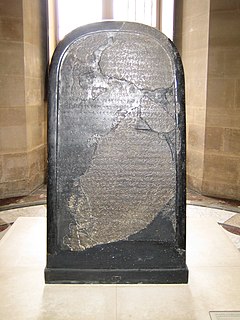 W
WKing Mesha of Moab was a king of Moab in the 9th century BC, known most famously for having the Mesha Stele inscribed and erected at Dibon. In this inscription he calls himself "Mesha, son of Kemosh-[...], the king of Moab, the Dibonite."
 W
WThe Mesoamerican ballgame was a sport with ritual associations played since at least 1650 BCE by the pre-Columbian people of Ancient Mesoamerica. The sport had different versions in different places during the millennia, and a newer more modern version of the game, ulama, is still played by the indigenous populations in some places.
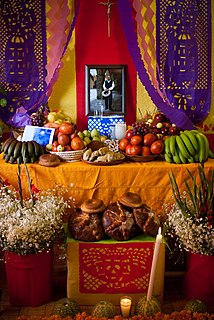 W
WAn ofrenda is a home altar with a collection of objects placed on a ritual display during the annual and traditionally Mexican Día de Muertos celebration. An ofrenda, which may be quite large and elaborate, is usually created for an individual person who has died and is intended to welcome them to the altar setting.
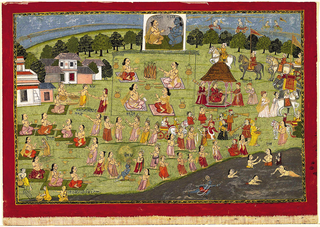 W
WRajasuya is a Śrauta ritual of the Vedic religion. It is a consecration of a king.
 W
WIn Mesoamerican culture, Tonatiuh was an Aztec sun deity of the daytime sky and ruled the cardinal direction of east. According to Aztec Mythology, Tonatiuh was known as "The Fifth Sun" and was given a calendar name of naui olin, which means "4 Movement". Represented as a fierce and warlike god, he is first seen in Early Postclassic art of the Pre-Columbian civilization known as the Toltec. Tonatiuh's symbolic association with the eagle alludes to the Aztec belief of his journey as the present sun, travelling across the sky each day, where he descended in the west and ascended in the east. It was thought that his journey was sustained by the daily sacrifice of humans. His Nahuatl name can also be translated to "He Who Goes Forth Shining" or "He Who Makes The Day." Tonatiuh was thought to be the central deity on the Aztec calendar stone but is no longer identified as such. In Toltec culture, Tonatiuh is often associated with Quetzalcoatl in his manifestation as the morning star aspect of the planet Venus.